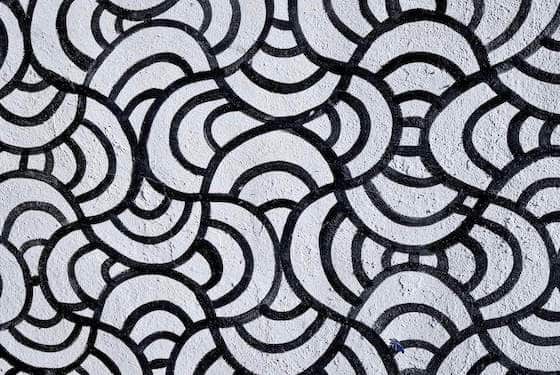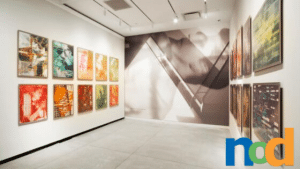Understanding Positive and Negative Space
by Taylor Slattery | July 20, 2023

Graphic design is all about managing varying types of visual contrast to catch the attention of viewers and communicate the desired message. Doing so effectively requires achieving a sense of visual balance and harmony amongst the components within a given composition. As designers, there are all sorts of tools that allow us to do this. One of the most important of which is the use and understanding of positive and negative space.

What Is Positive and Negative Space?
When we refer to space within the context of design, we’re simply referring to the shapes created by the elements placed within our composition. In this article, an example of Positive Space would be the type and the resulting rectangular shapes it creates and is where the viewer is meant to engage, whereas the margins and spaces between paragraphs are examples of Negative Space, which provide moments of rest.
For designers, the job of managing the relationship between positive and negative space extends beyond just the placing of copy on a page. Designers should also pay special attention to the spaces that exist within the lines, words, and characters they consist of. Type designers make fine adjustments to every character individually to optically balance the negative spaces that occur within their shapes to ensure visual harmony when placed alongside other characters.
As graphic designers use these typefaces, they in turn adjust parameters such as tracking and kerning to expand or contract the spaces between characters within a word, in conjunction with leading, which adjusts the spaces between lines of type. This balancing act of positive and negative space takes place at many different levels within any composition—everything discussed so far is applicable to logo design, illustration, and photography as well.

Using Space To Organize Information
So far we’ve covered some of the ways in which designers use positive and negative space to maintain a sense of balance, but understanding how to use space to create imbalance can be a useful tool as well. Beyond just the balancing of elements that appear next to one another, the primary function of space is the organization of information. Designers use proximity to group similar items and help viewers to more easily navigate and digest information.
The use of space can either draw or detract the viewer’s attention depending upon its use. By moving an element away from others, we communicate to the viewer that it’s different—indicating that the way they interact with it should be as well. Over time, designers have established format-specific conventions for the usage of space. In turn, users ingrained into these patterns approach each format with a certain expectation.
For example, we understand that certain areas like running heads and folios utilize information like section titles and page numbers when looking at a spread in a magazine or a page in a book. While margins allow us to hold our reading material without blocking any words with our thumbs.
In digital spaces like web design or UI/UX, similar patterns can be found in navigation and toolbars, which help users to quickly find what they’re looking for or perform common tasks. Conceptually, space and its various uses in design is easy to grasp, however, in practice, the successful balancing of positive and negative space can be difficult to achieve. In a graphic design certificate program, the expertise of seasoned instructors with decades of design experience can guide you and elevate your work to new heights.

Taylor is the Managing Editor of Notes on Design. Taylor is a graphic designer, illustrator, and Design Lead at Weirdsleep.
If you are interested in developing your graphic design skills, Sessions College offers a range of graphic design courses for students at all levels. Contact Admissions for more information.









